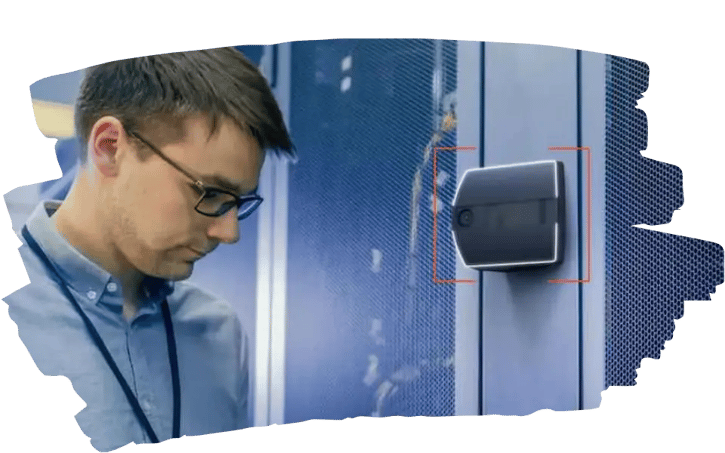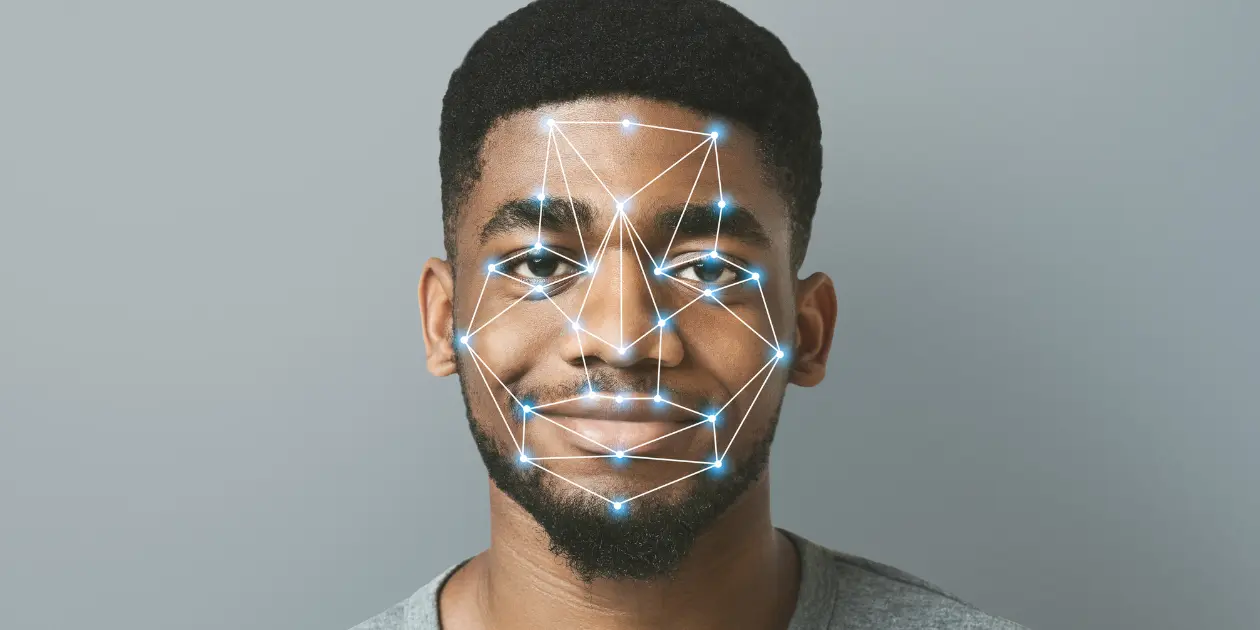It’s amazing how many imagined technologies from old science fiction movies are becoming realties these days. The “future-world” technology we’re covering today is the use of facial biometrics. One thing we want to clarify right away is the difference between facial biometrics vs facial recognition, because they’re often used interchangeably.
Facial Biometrics vs Facial Recognition
Facial biometrics and facial recognition are closely related concepts, but are used for slightly different purposes and involve different processes:
A Rundown of Facial Biometrics:
- Purpose: Facial biometrics is primarily used for verifying a person's identity. It's used in security systems where the identity of a person needs to be confirmed.
- Process: It involves measuring and analyzing specific physical characteristics of a person's face. This can include distances between eyes, nose, mouth, and jaw edges, as well as more complex features like the contours of the face.
- Usage: It's commonly used in systems that require a high level of security, like access control in high-security areas, passport control, and some mobile device unlocking mechanisms.
- Data Handling: Typically, facial biometric systems will store biometric data (like facial templates) in a secure way to ensure privacy and security.
A Rundown of Facial Recognition:
- Purpose: Facial recognition is more about identifying or verifying a person from a digital image or video frame against a database. It's often used in surveillance, marketing, and photo tagging.
- Process: This involves detecting and recognizing a face in an image or video and matching it against a database of known faces. It can be used to identify people in crowds, find missing persons, or track individuals for various purposes.
- Usage: It's widely used in social media for tagging friends in photos, by law enforcement for identifying persons of interest, in public surveillance systems, and in consumer applications like organizing photos.
- Data Handling: Facial recognition systems may handle a large amount of data, including images and videos from various sources, and their use often raises more significant privacy concerns compared to facial biometrics.
Now that you have an understanding of how the two technologies differ, let’s jump into exploring how facial biometrics, especially through products like the Alcatraz Rock, are reshaping access control and security protocols. From technological advancements to addressing privacy concerns, we'll explore how this technology isn’t just a futuristic concept, but a present-day solution for securing critical assets and infrastructure.
Our Blog
Subscribe to the Prime Secured blog to receive the latest updates.
Top 3 Advancements in Facial Biometrics
At its core, facial biometrics involves using unique facial features to identify and authenticate individuals. This technology leverages advanced algorithms and deep learning to accurately match faces against a database, even under varying conditions and angles.
Improved Algorithmic Sophistication for Diverse Faces:
- Description: One of the major advancements in facial biometrics has been the enhancement of algorithms to accurately recognize and differentiate a wide range of facial features across different ethnicities, ages, and genders. Earlier versions of facial recognition software often struggled with biases.
- Impact: This has led to a more equitable and effective deployment of facial biometrics technology, reducing the error rates and biases that were prevalent in earlier systems. It has increased trust and reliability in various applications, from security systems to consumer electronics.
Liveness Detection and Anti-Spoofing Techniques:
- Description: Advanced facial biometrics systems now incorporate sophisticated liveness detection and anti-spoofing measures. These technologies can distinguish between a real person and a photo, video, mask, or other forms of spoofing attempts. They often use techniques like analyzing the texture of the skin, the response to light, eye movement, and other behavioral and physiological characteristics.
- Impact: The integration of these features has enhanced the security of facial biometrics systems, making them more robust against fraud and unauthorized access. This is particularly crucial in sectors like finance, where secure identity verification is critical.
Integration with Artificial Intelligence and Machine Learning:
- Description: The integration of AI and machine learning has been a game-changer for facial biometrics. With these technologies, systems can learn from vast amounts of data, continuously improving their ability to recognize and verify faces accurately. AI algorithms can adapt to variations in facial appearance over time, such as aging, changes in facial hair, or makeup.
- Impact: This advancement has not only improved the accuracy and efficiency of facial biometric systems but also allowed for scalable solutions that can handle large databases of faces quickly and accurately. This has expanded the application of facial biometrics in various fields, including law enforcement, personal device security, and customer identification in the retail sector.
A perfect example of these advancements is the Alcatraz Rock. This system elevates facial biometrics by combining AI-powered facial recognition with 3D sensing, and real-time analytics. It's not just about recognizing a face; it's about understanding the context, detecting tailgating attempts, and providing a seamless and secure access control experience. Its ability to operate in various lighting conditions and recognize faces even with partial obstructions like masks or hats sets it apart in the market.
Example of The Rock leveraging these advancements to address the issue of piggybacking.
Addressing Privacy Concerns
We know in our overly connected world that privacy is a concern and it could be the very thing holding you back from implementing facial biometrics into your physical security strategy.
Common Privacy Concerns:
The most common privacy concern revolves around data storage, consent, and the potential for misuse of data. There is apprehension about how data is collected, who has access to it, and how long it is retained. These concerns are heightened in environments where security is critical, and the balance between safety and privacy is delicate.
Best Practices in Facial Biometrics for Privacy Protection:
- Consent and Transparency: It is vital to ensure that individuals are informed about the use of facial recognition technology and consent to it. Transparency about data usage policies helps in building trust.
- Data Security: Implementing strong encryption and secure storage methods to protect the biometric data from unauthorized access is non-negotiable.
- Regulatory Compliance: Adhering to privacy laws and regulations is essential. This involves regular audits and ensuring that the technology is used ethically and responsibly.
Alcatraz’s Approach to Privacy:
- The Alcatraz Rock system is designed with privacy in mind. It employs advanced encryption and security measures to protect the data it processes.
- The system operates under strict compliance with privacy regulations, ensuring that all data handling is legal and ethical.
- With features like on-device processing, the Alcatraz Rock minimizes the risks associated with data transmission, reducing the vulnerability of personal data.
By addressing these privacy concerns head-on, technologies like Alcatraz not only enhance security but also respect and protect individual privacy rights, creating a secure and trustworthy environment.
Perfect Use Cases for Facial Biometrics
Facial biometrics technology, particularly advanced systems like the Alcatraz Rock, excels in a variety of scenarios, especially where security is a critical concern. Here are some key use cases where this technology stands out:
- High-Security Areas: Places like data centers, research labs, and government buildings where sensitive information is stored are ideal for facial biometrics. The technology ensures that only authorized personnel gain access, maintaining a high security standard.
- Large Facilities with High Employee Turnover: In environments like distribution centers or manufacturing plants, where there are large numbers of employees, often with high turnover, facial biometrics streamline the entry process and prevent unauthorized access effectively.
- Areas Requiring Contactless Access: In the wake of health concerns like the COVID-19 pandemic, contactless security solutions have become more important. Facial biometrics provide a hygienic, touch-free access control method.
- Integration with Existing Security Systems: Facilities looking to upgrade their security systems can seamlessly integrate facial biometrics for enhanced protection without completely overhauling their current setup.

Curious to learn more or receive a demo of how the Alcatraz Rock works? Contact Prime Secured—we’d be happy to discuss how we can integrate facial biometrics into your security strategy. Let’s discuss to see if we can set up a pilot in your organization, ensuring your security is as advanced and reliable as it can be.

